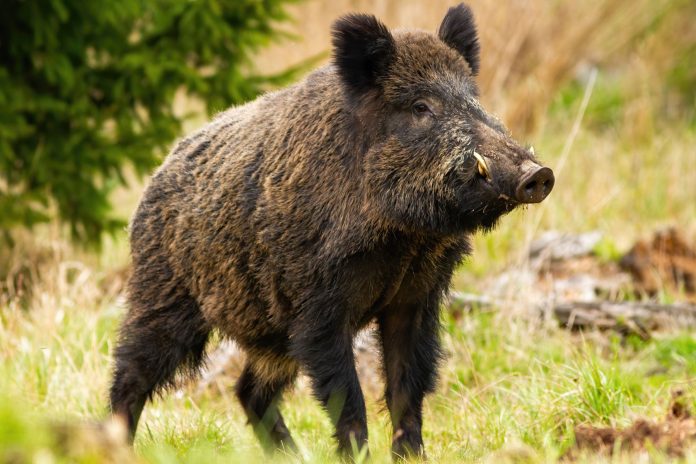Like many states across the country, Minnesota is dealing with a feral pig problem. The state is home to a number of Eurasian wild boars and Eurasian-domestic boar hybrids that have what the Minnesota Department of Natural Resources (MDNR) describes as “a limited distribution.” With wild pig sightings on the rise, concerned lawmakers just passed legislation that’s designed to reign in the burgeoning population of invasive hogs.
According to the MDNR, feral swine are “spreading across North America, trampling, foraging, wallowing, and rooting up land as they go.” In 2016, a domestic sow escaped from its enclosure on a Minnesota farm, turned feral, and later gave birth to a litter of piglets in a wildlife management area in the state’s northwest corner. It marked a rare instance of wild pig reproduction in the wild in Minnesota. Since then, MDNR officials have monitored pig populations with increased vigilance.
Today, upwards of six million wild pigs roam 35 U.S. states. They destroy crops, spread disease, contaminate water supplies, and reproduce rapidly. According to the United State Department of Agriculture, the animals are responsible for as much as $2.5 billion worth of annual damage. While invasive wild pigs have been breeding in North America since the 1500s, the current population surge is unprecedented. In some states—like Georgia and Texas—populations have doubled despite year-round hunting and no bag limits.
Minnesota hasn’t reached the crisis stage. According to the University of Minnesota Swing Extension program, the state does not have established free-roaming herds. But anecdotal reports about wild pig sightings have become more common, and there’s growing concern about the spread of a population of cold-hardy “super pigs” in Canada, just north of the Minnesota border. Lawmakers are taking action now to limit their reproduction and curtail uncontrolled growth.
The 2023 omnibus agriculture policy bill, which passed the Minnesota Legislature on Thursday, April 20, would require citizens to notify an MDNR conservation officer and the Board of Animal Health within 24 hours upon the intentional or accidental release of a Eurasian wild pig or Eurasian-domestic hybrid pig in the state. Violations would be enforceable by a misdemeanor. The bill would provide exceptions for cases in which wild pigs were being used for scientific research, educational, or commercial purposes.
Read Next: The 5 Best States for a Hog Hunting Adventure
Unlike other states with wild pig eradication goals, Minnesota doesn’t allow for any recreational hog hunting. The practice was banned in 2016 on all lands owned and managed by the state. The agency says that recreational hog hunting contributes to the spread of invasive swine by teaching hogs to avoid humans and encouraging the release of destructive pig breeds into the wild. Instead, the state relies on joint efforts from MDNR and federal officials that involve both trapping and targeted sharpshooting of known pig populations.








